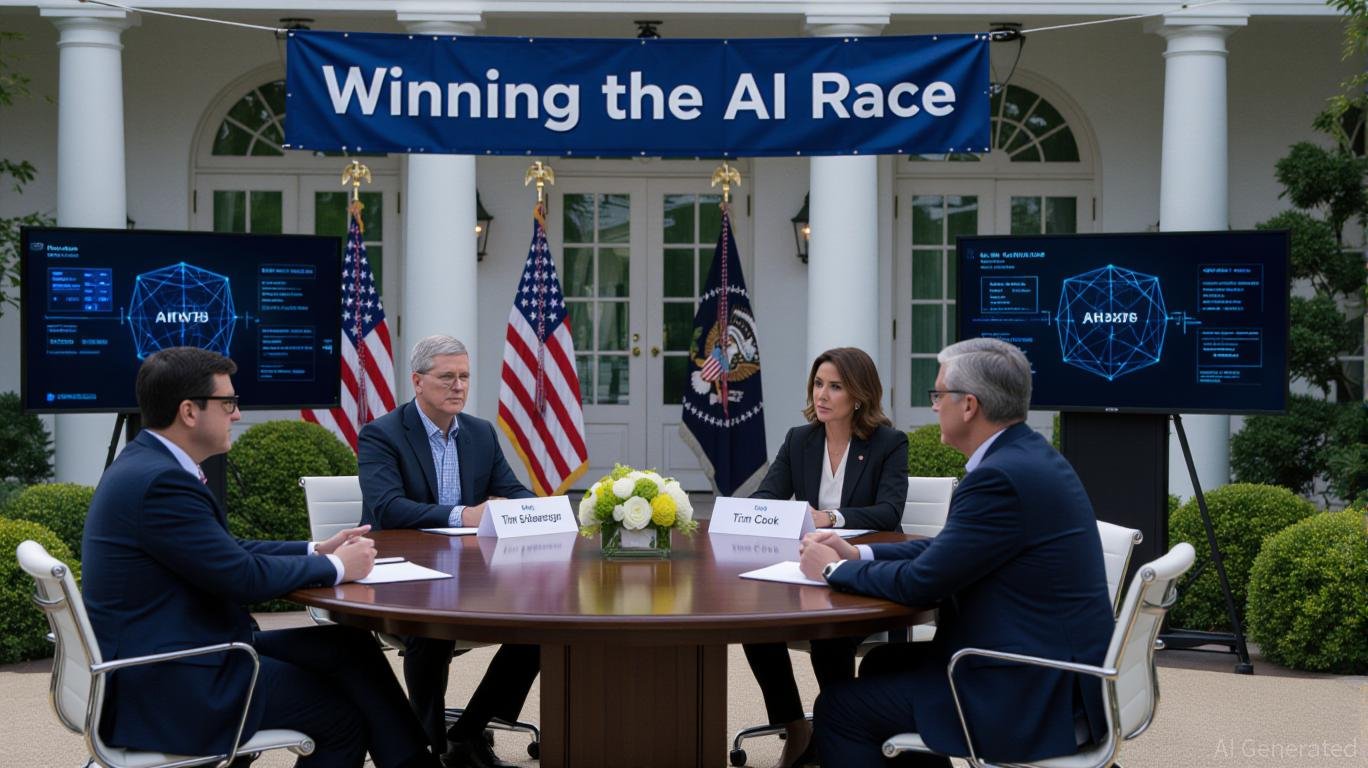Tools & Platforms
Taiwan Powers AI: The Hardware Realignment
Innovative technologies, including artificial intelligence, have ceased to be a niche technology, becoming the mainstay of modern economies. Hyperscalers and enterprise artificial intelligence solutions, as well as data centers, rely on superior servers and chips, along with some integration operations. The centerpiece of this shift is Taiwan, the country that has been a global leader in the creation of servers and AI hardware but that has remained under the radar. The strains of geopolitics and vulnerability of supply chain networks are pushing the best manufacturers of Taiwan to shift their operations. An ever-increasing number of these companies are establishing factories and assembly lines in Mexico and the United States to satisfy the demand, mitigate the threats, and reach the needs to change the trade policies. This change cannot simply be a tale of technology, but it is also a tale of international politics, tariffs, and the future of AI infrastructure.
Taiwan’s Role in AI Manufacturing
Taiwan dominates production of the AI servers with over 80% of the global servers and an even bigger market share of AI-ready servers. This management has a history of several decades of experience in the concept of contract manufacturing and well-established partnerships with U.S. technology companies. The AI revolution, however, is catching up to the pace of demand that even traditional supply chains cannot fulfill. Amazon, Microsoft, and Google are pushing their Taiwanese suppliers to manufacture hardware nearer North America. What is motivating them is exemplified by the idea that they need faster delivery times, want to avoid interference at the level of customs and other trade-related issues, and need to deflect exposure to the bouts of trade disputes with China. Taiwanese firms have emerged with a dual responsibility and advantage: to speed up the size and scope in new locations without sacrificing accuracy and consistency.
Strategic Shift
Foxconn, which has a long history of making iPhones, has reinvented itself with an AI structure. Server and cloud products revenue topped the smartphone segment in 2025, amounting to 41% of the sales compared to 35% by the cell phones (Reuters). This shift is indicative of a low increase in the smartphone sector and a high demand in AI. Foxconn, which it has recently established on a massive scale in Guadalajara, Mexico, includes what it calls the largest facility anywhere to bundle Nvidia superchip Blackwell. Simultaneously, it is also adopting a dual-track approach, which entails launching the twin production lines in the United States. The strategy is a protection against tariff risk with the flexibility to be able to provide faster and stronger delivery to hyperscaler clients. This change does not mark a short-term adjustment but rather represents a long-term reprocessing of global electronics manufacturing agendas.
Quanta and Pegatron Follow Suit
Foxconn is not the only one to take such a step towards realigning. One of the largest server makers in the world, Quanta Computer has invested one billion dollars in Nuevo León with the aim of creatingadditional capacity in AI server manufacturing. The geographical location of the region in proximity to Texas and the developed industrial infrastructure is also attractive in the scaled operations base. Pegatron, in its turn, said that the mass production of AI servers in Mexico will start in the third quarter of 2025. The company also has plans for larger complimentary facilities in the United States of America to fulfill much more stringent trade and regulatory needs. Both companies are moving toward hyperscaler customers that need quick installations of Blackwell-type systems. In a combination of these moves, the Taiwanese response makes it clear that a new era of hardware production has been realized, which focuses on diversification and resiliency in regions.
Wistron Expands in the U.S.
Foxconn, Quanta, and Pegatron remain focused on Mexico, but Wistron is moving directly to the United States. The company has planned an investment of 500 million dollars towards builds located in and around Dallas to assemble the new generation of AI servers developed by Nvidia. The facility is projected to open in 12 to 15 months, ready to assist the epic $500 billion AI server deployment by Nvidia across the nation. The ruling highlights the significance of geographical balance in the chain of supply, especially with the growing tariffs and regulatory demands. The direct manufacturing in the United States makes Wistron compliant and gives customers the confidence. Meanwhile, the company can also use local incentives and access to differentiated sources of talent in Texas at the same time. At the same time, its approach is in line with a newfound belief among businesses in Taiwan: diversification is not just recommended but a mandatory survival technique in the age of AI.
Financial Momentum and Rising Risks
These business decisions are supported by healthy financial reporting of the company. Giant manufacturing giant Foxconn experienced a rise in net profit of 27% in the second quarter of 2025, to US$1.48 billion, due to the demand of AI servers. In the third quarter, the AI-related revenue boom is projected to rise more than 170% compared to the previous quarter. Other companies are also experiencing tremendous growth, with Wistron recording a growth of 92.7% and Quanta a growth of 65.6% in the first seven months of 2025. These figures prove that AI is not a technological phenomenon but a structural change in the world economy. However, there are still dangers. There could be an increase in tariffs on imports into Mexico, Canada, and even other friendly economies. The need to deal with fluctuations in currency, lack of water, and fluctuations in the power grid in Mexico also presents an operational and maintenance challenge. The future looks bright, but it does not lack challenges.
Government Initiatives and Policy Pressure
It is also a concern of governments to develop new AI hardware geography. The Taiwanese leadership has embarked on a project of 10 major AI infrastructures it plans to develop as the economy aims to achieve an economic production of 510 billion by 2040 through the use of advanced research, robotics, and quantum technology. Citing concerns that shipments can be diverted to China, the U.S. government is getting tougher on export controls, going as far as installing GPS-like tracking devices in the AI chips themselves. Mexico, in turn, is also using quiet diplomacy to get tariff stays and Taiwan investment without infuriating China. These policy measures demonstrate how AI hardware has become a national security issue in addition to a business development concern. The relationship between corporate strategy and government policy will become the key to whether North America could be a stable and competitive hub in AI manufacturing.
Broader Implications for the IT Industry
These developments have a number of implications for IT professionals and businesses throughout the world. One is that procurement strategies have to consider changing sources of supply, with an increasing number of AI servers now being manufactured in Mexico or the U.S. Second, compliance and transparency are increasingly important issues because chips and servers are subject to increasingly strict compliance and tracking requirements under export controls. Third, integrating manufacturing has opened the possibility of new regional suppliers in power systems, cooling solutions, and logistics. Lastly, the geopolitical aspect cannot be disregarded further: the businesses that are highly dependent on Chinese manufacture are threatened to experience delays, tariffs, or outrageous restrictions out of the blue. The world IT community needs to embrace the flexibility, resilience, and proactive approach to supply chain risks.
Conclusion
Taiwan has been pivoting in North America, and this has been a huge movement in the current technological manufacturing. The moves started as a strategic adaptation to trade pressures but have now become an architectural overhaul in the AI hardware market. With Foxconn, Quanta, Pegatron, and Wistron bidding billions worth of investments in Mexico and the U.S., North America is fast turning into an important center of research and development pertaining to next-generation AI. This change will, however, be sensitive to political bargaining and infrastructure preparedness and global competition. The takeaway of this message to IT professionals, policymakers, and business leaders is simple: AI is redefining what software and data are and the fundamentals of global supply chains to boot.
Concurrently, numerous nations, particularly in the Global Southern region, run the risk of lagging because of poor infrastructure, resources, and talent, as well as regulatory deficiencies. Unless there is a strategic move, technological divides might widen. To eliminate this, countries ought to give preference to digital infrastructures, invest in training on AI, develop enabling policies, and pursue international cooperation. The inclusive nature of AI regulations can help them to grasp economic advantages by reducing the global inequalities.
Only time will tell whether this change in manufacturing is a lasting strength or unaffordable trial and error. The ability to respond to both opportunity and risk will ultimately determine how successful nations can be in the transformative AI era and how they can compete and become world leaders in technology.
Tools & Platforms
A Strategic Inflection Point for AI and Corporate Alignment

The Trump administration’s recent AI Action Plan and the high-profile Tech Summit in the newly renovated White House Rose Garden mark a pivotal recalibration of U.S. technology policy. By aligning corporate priorities with federal deregulatory ambitions, the administration is reshaping the investment landscape for artificial intelligence. This analysis explores the strategic implications of this alignment, focusing on how Trump’s policies are redefining risk, reward, and global competitiveness in the AI sector.
Deregulation as a Catalyst for Innovation
The administration’s AI Action Plan, unveiled on July 23, 2025, prioritizes accelerating innovation through regulatory rollbacks. Over 90 federal policy actions aim to remove barriers to AI development, including streamlined permitting for data centers and reduced environmental restrictions on infrastructure projects [2]. For instance, the use of categorical exclusions under the National Environmental Policy Act (NEPA) now expedites data center construction, a move that could unlock billions in private investment. According to a report by Bloomberg, this deregulatory push has already spurred a 20% surge in capital expenditures by hyperscale cloud providers in Q3 2025 [4].
The emphasis on “ideological neutrality” in federal AI procurement, formalized via the “Preventing Woke AI” executive order, further signals a shift in priorities. By mandating that AI models adhere to “truth-seeking” principles, the administration is fostering a market environment where companies like Nvidia and Microsoft—whose open-weight models align with these guidelines—stand to gain significant federal contracts [5]. This creates a dual opportunity: firms that adapt to the new framework may secure lucrative government partnerships, while those lagging in compliance risk marginalization.
Infrastructure and Export-Driven Growth
A cornerstone of the AI Action Plan is the push to build domestic AI infrastructure, including semiconductors and data centers. The administration’s call for a single federal standard—replacing a patchwork of state-level regulations—has already influenced investor behavior. Morgan Stanley notes that tech stocks in the S&P 500 accounted for 80% of the index’s gains in 2025, with AI-related equities outperforming by a 15-point margin [4]. This trend is amplified by the administration’s focus on exporting the “American AI Technology Stack” to allies, a strategy that could expand markets for U.S. firms while countering Chinese influence [3].
However, this infrastructure push is not without risks. Critics warn that reduced environmental oversight could lead to long-term costs, such as energy grid strain and ecological damage. Yet, the administration’s commitment to modernizing the power grid—part of its AI Action Plan—suggests a calculated effort to mitigate these concerns through public-private partnerships [5].
Corporate Alignment and Investor Sentiment
The Trump administration’s summit with tech leaders like Mark Zuckerberg, Tim Cook, and Bill Gates underscores a deliberate effort to harmonize corporate and federal agendas. This alignment has translated into investor confidence: since the plan’s announcement, the S&P 500’s AI-driven gains have surged, with Nvidia’s market cap alone rising by $1.2 trillion in six months [1].
Yet, this optimism is tempered by divergent regulatory pressures. While the federal government promotes deregulation, states like California and New York have maintained stricter AI oversight. This creates a “regulatory arbitrage” scenario, where companies may prioritize federal-aligned strategies to access funding and contracts, even if it means sidestepping state-level safeguards [2]. For investors, this duality presents both opportunities (e.g., scalable AI deployments) and risks (e.g., reputational damage from perceived ethical lapses).
Strategic Implications for Investors
The administration’s focus on global AI leadership—through alliances with like-minded nations and export controls—positions U.S. tech firms to dominate emerging markets. However, the lack of detailed implementation timelines in the AI Action Plan raises questions about execution risks [6]. Investors should prioritize companies with robust supply chains and geopolitical agility, such as semiconductor manufacturers and cybersecurity firms.
Conversely, sectors reliant on state-level regulations (e.g., healthcare AI with privacy mandates) may face headwinds. The administration’s discouragement of state-level AI rules—via funding decisions tied to regulatory climates—could force firms to choose between compliance and profitability [1].
Conclusion
Trump’s Tech Summit and AI Action Plan represent a strategic inflection point, redefining the interplay between corporate innovation and federal policy. While deregulation and infrastructure investment offer clear tailwinds for tech stocks, investors must navigate the tension between short-term gains and long-term risks. The administration’s emphasis on ideological neutrality and global competitiveness suggests a market environment where alignment with federal priorities will increasingly dictate success. For now, the data—and the market—seem to be on the administration’s side.
Source:
[1] The Trump Administration’s 2025 AI Action Plan [https://www.sidley.com/en/insights/newsupdates/2025/07/the-trump-administrations-2025-ai-action-plan]
[2] Tech companies want to move fast. Trump’s ‘AI Action Plan’ [https://www.latimes.com/business/story/2025-07-23/trump-unveils-ai-action-plan]
[3] Trump AI Summit Targets Hardware as Key to US Supremacy [https://www.bloomberg.com/news/newsletters/2025-07-28/trump-ai-summit-targets-hardware-as-key-to-us-supremacy]
[4] Q2 2025 Market Perspective [https://altiumwealth.com/blogs/altium-insights/q2-2025-market-perspective]
[5] Trump Administration Unveils AI Action Plan with … [https://www.mayerbrown.com/en/insights/publications/2025/07/trump-administration-unveils-ai-action-plan-with-implications-for-innovation-infrastructure-and-global-tech-competition]
[6] Inside Trump’s Ambitious AI Action Plan | Stanford HAI [https://hai.stanford.edu/news/inside-trumps-ambitious-ai-action-plan]
Tools & Platforms
AI, lasers and chips: the science and tech of China’s military parade

China’s military parade on Wednesday – featuring the latest AI-powered uncrewed vehicles, laser weapons and missiles – signalled an arms race fuelled by scientific and technological advances.
Artificial intelligence, optics and physics and information technologies have underscored how innovations will shape the future of modern warfare, paving the way for futuristic intelligent systems.
“The parade featured unmanned intelligent systems, underwater combat units, cyber and electronic forces and hypersonic weapons, highlighting the growing capacity of the People’s Liberation Army (PLA) to harness emerging technologies, adapt to the evolving character of warfare, and prevail in future conflicts,” state broadcaster CCTV said.
The weapons on parade featured a “high level of informatisation, intelligence and practical combat capability, showcasing the military’s combat abilities, capabilities in new domains and strong strategic deterrence”, Dong Yongzai, a researcher at a centre under Beijing’s Academy of Military Science, told CCTV.
AI-powered equipment and vehicles
The parade showcased a variety of AI-powered uncrewed equipment.
The land combat formation showed vehicles that can perform reconnaissance, assaults, mine and bomb defusing and squad support, according to CCTV.
Tools & Platforms
Janus Health Joins Cipher Collective as Revenue Cycle Technology Provider in AI-Enabled Healthcare Initiative – geneonline.com
-

 Business5 days ago
Business5 days agoThe Guardian view on Trump and the Fed: independence is no substitute for accountability | Editorial
-
Tools & Platforms3 weeks ago
Building Trust in Military AI Starts with Opening the Black Box – War on the Rocks
-

 Ethics & Policy1 month ago
Ethics & Policy1 month agoSDAIA Supports Saudi Arabia’s Leadership in Shaping Global AI Ethics, Policy, and Research – وكالة الأنباء السعودية
-

 Events & Conferences4 months ago
Events & Conferences4 months agoJourney to 1000 models: Scaling Instagram’s recommendation system
-

 Jobs & Careers2 months ago
Jobs & Careers2 months agoMumbai-based Perplexity Alternative Has 60k+ Users Without Funding
-

 Education2 months ago
Education2 months agoVEX Robotics launches AI-powered classroom robotics system
-

 Funding & Business2 months ago
Funding & Business2 months agoKayak and Expedia race to build AI travel agents that turn social posts into itineraries
-

 Podcasts & Talks2 months ago
Podcasts & Talks2 months agoHappy 4th of July! 🎆 Made with Veo 3 in Gemini
-

 Podcasts & Talks2 months ago
Podcasts & Talks2 months agoOpenAI 🤝 @teamganassi
-

 Education2 months ago
Education2 months agoAERDF highlights the latest PreK-12 discoveries and inventions





















